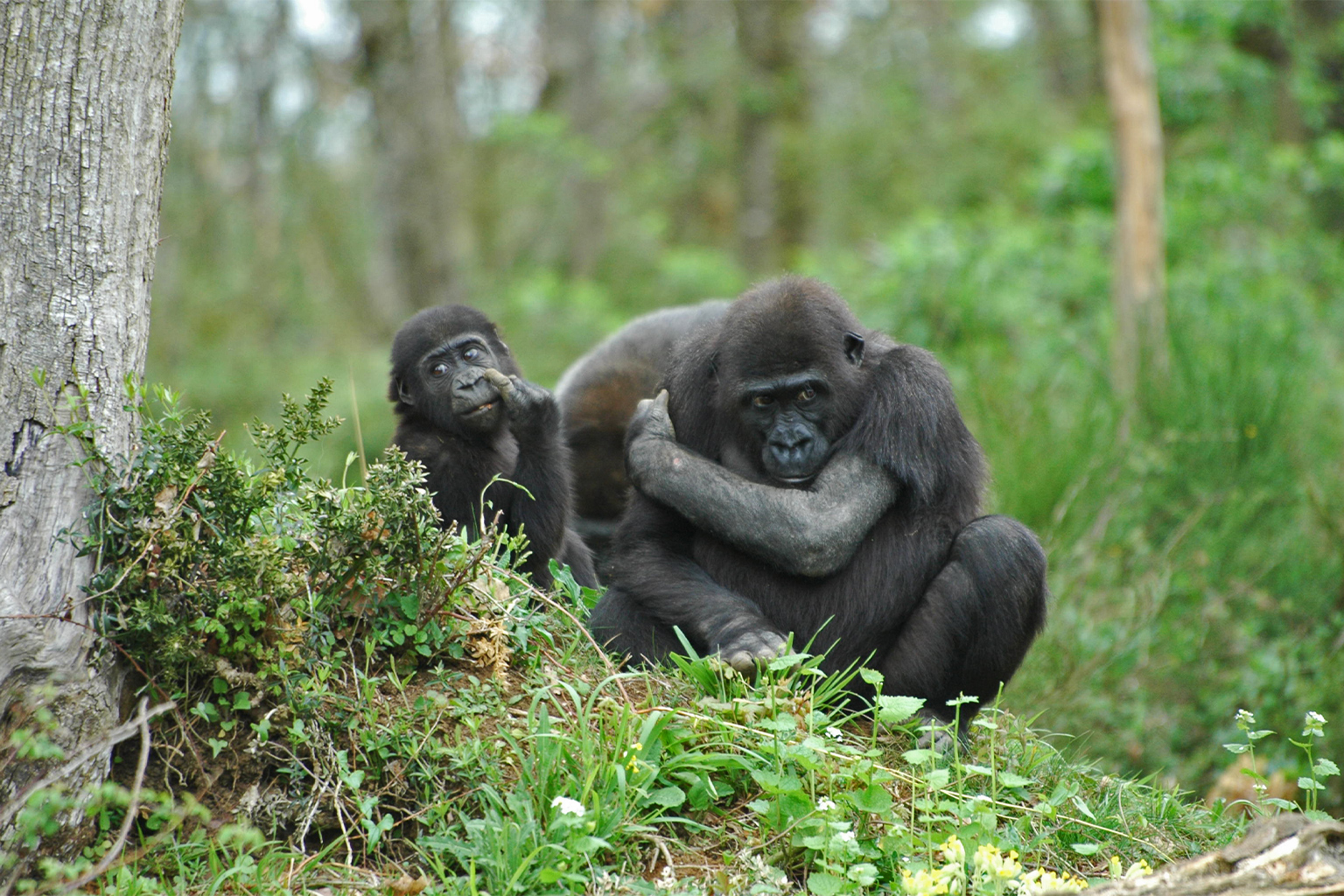- As conservationists across the globe observe World Gorilla Day this Sept. 24, all species and subspecies of the ape remain either endangered or critically endangered.
- It’s not all bad news for gorillas, though, as conservation strategies have led to concrete gains, including growth of some gorilla populations.
- Here, Mongabay reflects on some of the lessons from this year’s news and new research.
September 24 marks World Gorilla Day, set aside to celebrate these threatened giants of the forest as well as to renew calls for action to protect them.
All gorilla species and subspecies are either endangered or critically endangered, and face dire pressures including habitat loss, climate change, disease, and poaching. But recent years have seen many conservation wins as well, with estimates for mountain and Grauer’s gorilla populations on the upswing.
Knowledge about gorillas is always growing, and with it opportunities to improve conservation practices. To mark this year’s World Gorilla Day, Mongabay rounds up some of the lessons learned over the past year.

Gorillas are indeed susceptible to COVID-19
From the very beginning of the COVID-19 pandemic, scientists anticipated that gorillas and other great apes would be susceptible to the disease. Gorillas share around 98% of their DNA with humans, and are known to be severely affected by human respiratory ailments. The fear was definitively confirmed in January 2021 when gorillas at San Diego Zoo in California tested positive for COVID-19. Other cases later followed at Atlanta Zoo.
On the plus side, there have not been any reports of COVID-19 infections in wild populations.
Tourism can be a fickle funding source
Quick and decisive measures were taken to protect wild gorilla populations from being exposed to COVID-19, with parks across Africa shuttered to tourists and ground patrols restricted. The lack of reported infections indicates that these measures have been successful. But they have come at a cost.
In recent decades, conservation funding models that rely on tourists paying top dollar to view gorillas and other apes in their natural settings have proven spectacularly successful in countries like Rwanda and Uganda. With restrictions in place to protect apes, and global bans on travel, tourism revenues dropped off a cliff and still haven’t recovered.
The pandemic has pushed conservation organizations to focus on widening their funding models to ensure the long-term sustainability of programs that aim to protect gorillas and to provide livelihoods for communities that live alongside them.

The people who live alongside gorillas must truly be included in conservation programs
Conservation groups are increasingly recognizing the importance of deep and meaningful engagement with communities that live in gorilla habitat. In one such case, experts say giving local people ownership of community forests, and ensuring that programs aimed at increasing gorilla populations also increase human welfare, has helped protect Grauer’s gorillas (Gorilla beringei beringei) in the Democratic Republic of Congo.
Grauer’s gorillas are more numerous than previously estimated
A study led by the Wildlife Conservation Society (WCS) and published in May 2021 estimated the population of Grauer’s gorillas to be 6,800. This nearly doubles previous estimates, from 2016, of just 3,800 individuals. The increase was largely due to the more recent survey adding data from forests in the eastern Democratic Republic of Congo, which had previously been inaccessible to researchers due to security concerns. The results, the researchers said, came as both a surprise and an encouragement. However, the species remains critically endangered.
Conservation successes can lead to new challenges
Intensive efforts to protect mountain gorillas have succeeded in wresting the species from the brink of extinction. But research suggests that if suitable habitat fails to expand in tandem with gorilla populations, the resulting increase in population density can create its own problems.
One study found that gorillas in denser populations showed more signs of parasitic infections, which researchers attribute to their weakened resistance due to the stresses caused by increased intergroup conflicts. Other research has also shown an uptick in infanticides and violent encounters between mountain gorilla groups as available habitat per gorilla shrinks.
Banner image of a gorilla by Mike Arney via Unsplash.
